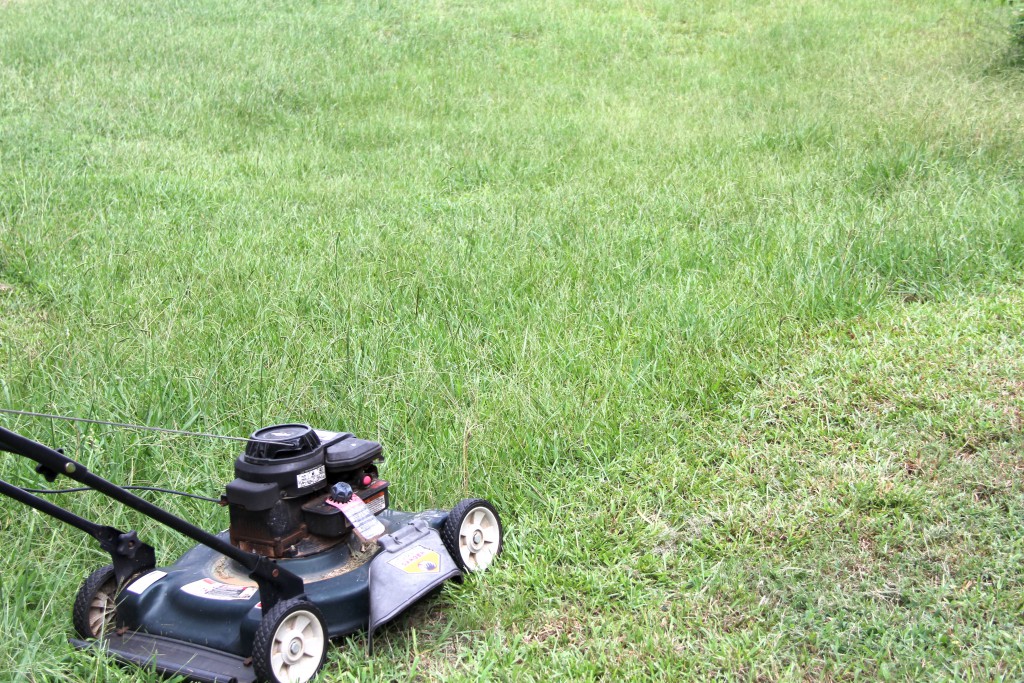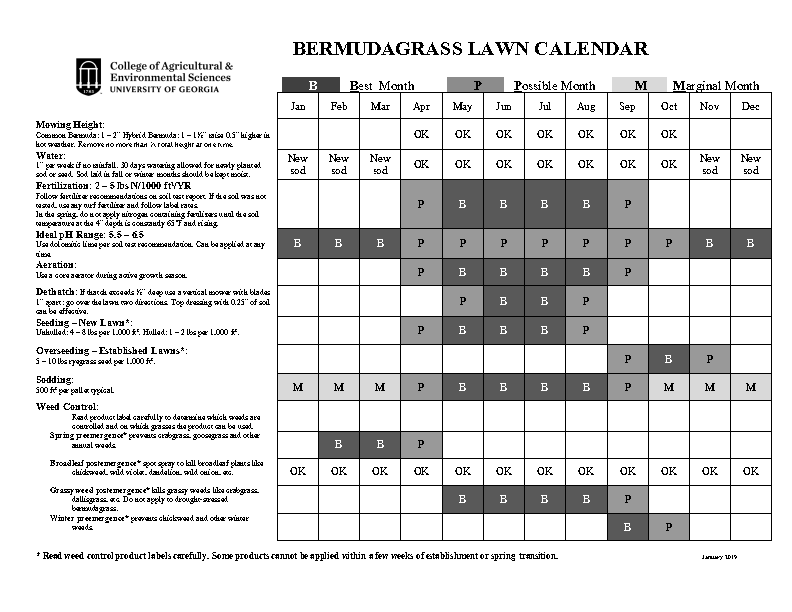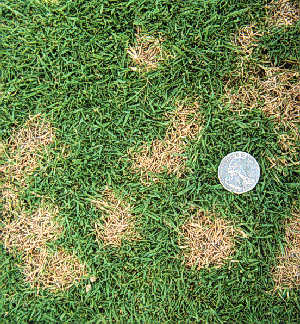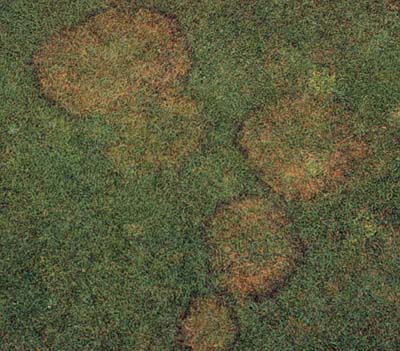Written By: Emily Cabrera, UGA IPM Communications Coordinator
Expert Source: Clint Waltz, Extension Turfgrass Specialist

With the heat of summer bearing down on us, University of Georgia Extension turfgrass specialists recommend homeowners ‘stick to the schedule’ for healthy lawn maintenance.
College of Agricultural and Environmental Sciences Extension turfgrass specialist Clint Waltz says “Just stay on schedule, we’ve been on a fairly good weather pattern this year, so stay on track taking care of your warm- and cool-season grasses by maintaining mowing heights, fertility programs, and irrigation schedules.”
Lawn maintenance calendars for the various turfgrass species can be viewed and printed from the Pest Control Recommendations section at www.GeorgiaTurf.com.
Warm-season Lawn Calendars:
Cool-season Lawn Calendar:

“Although we’ve had a good bit of rain in some parts of the state this summer, it’s typical to start seeing very hot, dry conditions late in summer and early fall, and we’re already seeing those conditions in some areas. The irrigation mantra is to water lawns deeply and infrequently,” said Waltz. He recommends aiming for about an inch of water every week, but warns not to water too often. Instead, Waltz tells homeowners to space out their irrigation schedules to about twice a week, making sure to get good saturation at each watering to encourage deeper root growth.
It’s still a good time to plant warm-season grasses statewide. “It’s a little too late to seed-establish if you are anywhere north of the fall line, but sod is still good to go statewide for about another month or so,” explained Waltz.
If you have warm-season grasses, you’re still in the clear to aerate your lawn this summer. Waltz recommends homeowners core-aerate their lawns – at minimum – every three to four years, but suggests once or twice a year in more heavily-compacted areas. “Ultimately, the more oxygen you get to the root system the better,” said Waltz.
“As far as disease issues go, Dollar Spot in bermudagrass and zoysiagrass has been number one in home lawns in the last few weeks,” Waltz said. He attributed the spike in cases to weather patterns typical of Georgia summers – late evening showers and high night-time relative humidity.

“Most commonly, when we see Dollar Spot appearing after prolonged rainfall events, we recommend homeowners look for fungicide products in the strobilurin (e.g. Heritage, Disarm, Compass, and Insignia) or DMI (e.g. Eagle, Banner, etc.) classes. There are many to choose from, and all of them work well. If the weather stays dry for the next week, don’t apply a fungicide, but if you have continued rain in your area, go ahead and make a fungicide application,” explained Waltz. “However, Dollar Spot can sometimes be associated with a lack of nitrogen, in which case homeowners can add about ½ – ¾ pound of N per 1000 sq ft on warm-season grasses,” said Waltz.
Weed control in turfgrass this late in the season will purely rely on postemergence herbicides. “The most important thing here is proper weed identification and use of prescriptive herbicides,” cautioned Waltz. “Broad spectrum products are not as good at knocking back weeds because they are not targeting any particular species, and it’s really not economically or environmentally wise to make blanket applications to your lawn.”
If you’re more north in the state, be prepared to embrace the annual “fall swoon” of tall fescue. “It’s hanging in there, but in late July and early August the hot, dry conditions will trigger a defense mechanism in tall fescue,” explained Waltz. “The canopy begins to open up to conserve resources until late September, and then will use those stored resources to regenerate. This happens every year, so don’t be alarmed, it will get bad, then worse, and then will start to turn around again in the fall.”
For tall fescue, maintenance varies slightly from the warm-season grasses. Waltz recommends deep and infrequent irrigation, no summer fertilizer applications, aeration in September or October, and use of fungicides as a preventative measure against Brown Patch.

“Try to find a fungicide with a 28-day residual to help maintain the canopy, especially when there is limited air movement through late summer and early fall. Ideally, homeowners should rotate chemical classes to prevent resistance issues,” Waltz said of the prophylactic measures to prevent Brown Patch disease.
To learn more about turfgrass, visit www.GeorgiaTurf.com.